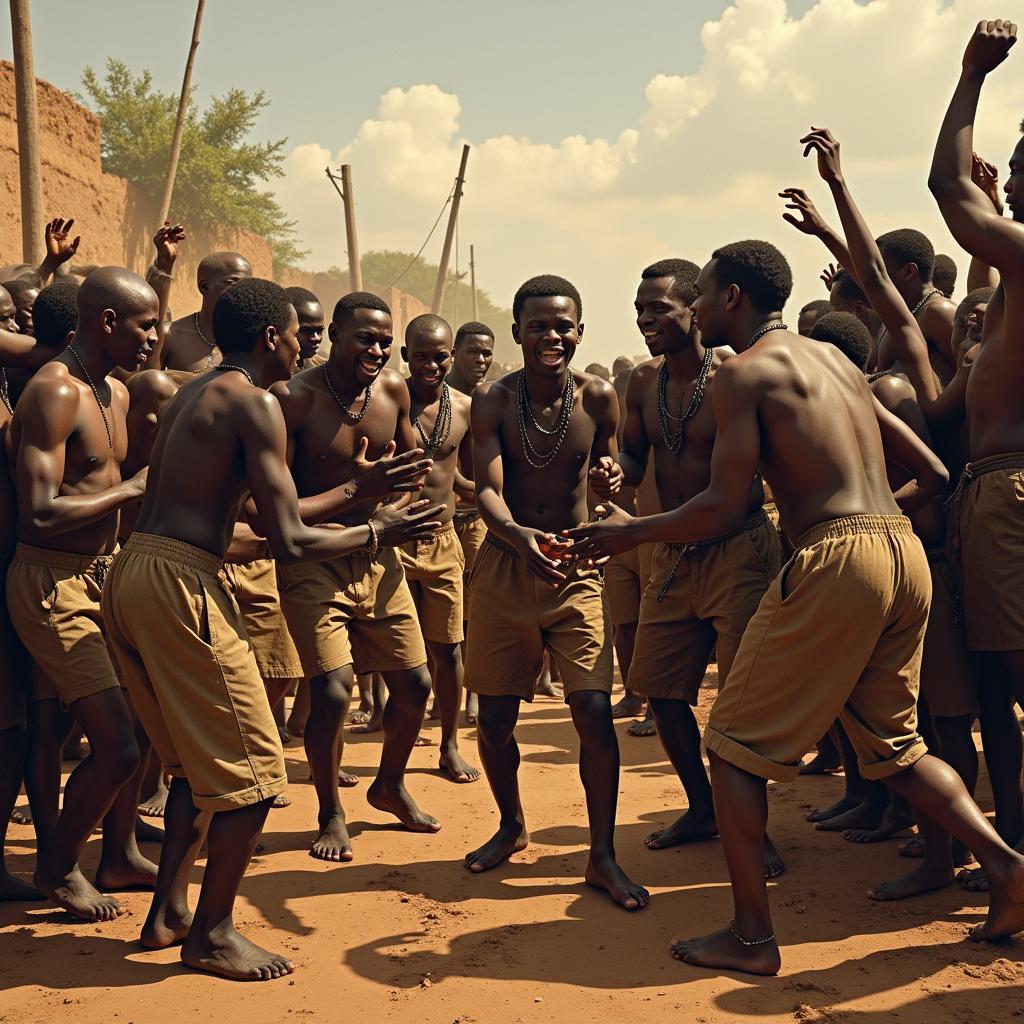African American in Black and White: A Photographic Journey Through History
African American In Black And White photography offers a powerful lens through which to explore the rich tapestry of African American history and culture. From the stark realities of slavery to the triumphs of the Civil Rights Movement, these monochromatic images capture the essence of a people’s resilience, creativity, and enduring spirit. This exploration delves into the significance of black and white photography in documenting the African American experience, highlighting key figures, movements, and artistic expressions.
The power of black and white photography lies in its ability to distill a scene to its fundamental elements, emphasizing light, shadow, texture, and emotion. In the context of African American history, this medium has served as a powerful tool for documenting both struggle and triumph. Early photographs of enslaved people, though often taken through the biased lens of the time, offer glimpses into their humanity and resilience. Later, during the Jim Crow era, black and white photography became a crucial weapon in the fight for civil rights, exposing the injustices faced by African Americans and galvanizing support for change.
The Power of Monochrome: Capturing the African American Experience
The impact of black and white images on public perception during the Civil Rights era cannot be overstated. Photographs of peaceful protestors being attacked with fire hoses and police dogs, images of segregated lunch counters and schools, these stark visuals brought the realities of racism to the forefront of the American consciousness.
After this paragraph, insert  African American Civil Rights Protest in Black and White.
African American Civil Rights Protest in Black and White.
African American photographers, both professional and amateur, played a vital role in documenting their communities and challenging prevailing stereotypes. Their work provided an alternative narrative, showcasing the richness and complexity of African American life beyond the limited portrayals often found in mainstream media.
African American Modernism Through the Lens
African American modernism found expression through photography, capturing the cultural shifts and artistic innovations of the early to mid-20th century. Artists like James Van Der Zee documented the Harlem Renaissance, capturing the vibrancy of the era’s intellectual and artistic life. These photographs offered a glimpse into a thriving community and helped to shape a new image of Black identity.
What did these images represent? They served as a powerful counter-narrative to the dominant racist stereotypes of the time. They showcased Black elegance, sophistication, and creativity, challenging the prevailing negative perceptions.
After this paragraph, insert .
From Portraits to Social Commentary: The Evolution of African American Photography
African American oil paintings share a similar trajectory, documenting the evolution of self-representation and social commentary. From early portraits to powerful statements on social justice, art has served as a vital means of expression for African American artists throughout history. This exploration of visual art further underscores the significance of representation and the ongoing dialogue between art and social change.
How did photography evolve as a medium for social commentary? By the mid-20th century, photographers like Gordon Parks used their cameras to document the realities of poverty, segregation, and racial injustice, bringing these issues to the attention of a wider audience. Their work helped to fuel the Civil Rights Movement and sparked crucial conversations about race and equality in America.
African Americans during apartheid maya angelou black and white is a topic that intersects with the broader theme of racial struggle and resilience captured through black and white imagery.
After this paragraph, insert .
African american bald cap and African american photographers atlanta ga offer additional avenues for exploration within the broader context of African American representation and artistic expression.
Dr. Kimberly Jones, a renowned historian specializing in African American visual culture, notes, “Black and white photography possesses a unique ability to transcend time, allowing us to connect with the past in a profound way.” Another expert, Dr. Kwame Asante, a leading scholar on African American history, adds, “These images serve as powerful reminders of the struggles and triumphs that have shaped the African American experience.”
In conclusion, African American in black and white photography offers a compelling visual narrative of resilience, creativity, and the ongoing pursuit of justice. These images, frozen in time, continue to resonate with viewers today, reminding us of the importance of remembering the past and striving for a more equitable future. The monochromatic lens provides a unique perspective, stripping away distractions and focusing on the core human experience, capturing the essence of African American history and culture.
FAQ
- Why is black and white photography so impactful in documenting African American history? Black and white photography emphasizes the raw emotion and historical significance of moments in African American history.
- Who were some key African American photographers during the Civil Rights era? Gordon Parks was a prominent photographer who documented the realities of racial injustice during the Civil Rights era.
- How did photography contribute to the Civil Rights Movement? Photographs of injustices faced by African Americans galvanized support for change and helped fuel the movement.
- What is the significance of the Harlem Renaissance in photography? The Harlem Renaissance saw a flourishing of African American photography, showcasing Black elegance and creativity.
- How has African American photography evolved over time? From early portraits to social documentary and artistic expression, African American photography has evolved to capture various facets of Black life and history.
- Where can I find more information about African American photography? Museums, archives, and online resources offer vast collections and information on African American photography.
- What is the lasting legacy of African American photography? African American photography provides a powerful visual narrative of resilience, creativity, and the ongoing pursuit of justice, shaping our understanding of history and inspiring future generations.
Common Scenarios and Questions
- Scenario: A student researching the impact of photography on the Civil Rights Movement. Question: Where can I find historical black and white photographs documenting the Civil Rights era?
- Scenario: An art enthusiast interested in the Harlem Renaissance. Question: Who were some influential photographers during the Harlem Renaissance and what were their key themes?
- Scenario: A teacher planning a lesson on African American history. Question: How can I use black and white photographs to engage students and teach them about the African American experience?
Further Exploration
Explore other related articles on our website for a deeper understanding of African American history, art, and culture.
Need Support?
When you need assistance, please contact Phone: +255768904061, Email: kaka.mag@gmail.com Or visit: Mbarali DC Mawindi, Kangaga, Tanzania. We have a 24/7 customer service team.

